60 F. high in the Twin Cities Wednesday.
55 F. average high on October 22.
40 F. high temperature on October 22, 2013.
October 22, 1899: Warm day in the Twin Cities with a high of 82.
5:35 pm today: peak of partial solar eclipse.

But Wait, There’s More (Indian Summer)
Yesterday an acquaintance had the nerve to complain about showers in the forecast. Really? Rain. Liquid water. At night. On a weekday. You do realize you could be ankle-deep in slush right now? 1 to 3 inch snowfalls begin to ramp up in late October; but snow cover doesn’t linger until late November – when the mercury is consistently colder than 32F.
It’s been a miraculously nice couple of weeks, some of the finest fall weather I can ever remember. And it’s not over.
Soggy Leaf Warnings are issued this morning, a rude reminder that a little rain on freshly fallen leaves can make for a slippery mess. The sun peeks out later, boosting temperatures into the 60s. 70F is not out of the question tomorrow before a very slight cool-down Saturday with highs in the low 60s; still above average for late October.
A mild start Monday gives way to a reality check next week. Odds favor jacket-worthy 40s for Trick or Treating next Friday. Which is scarier: bats, ghouls or the latest political attack ads on TV?
I’m not sure which is more terrifying but I can see the ad campaign now. “Old Man Winter Has a Mean Streak! He’s Just Not Right for Minnesota.”
I respectfully disagree.
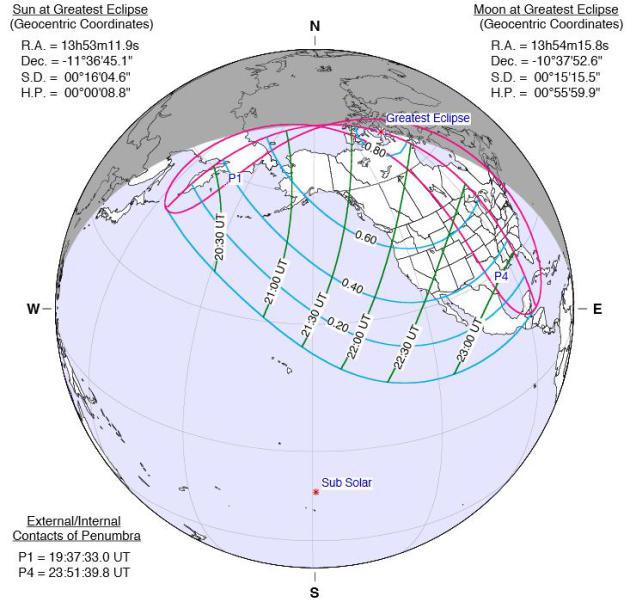
Partial Solar Eclipse. Here’s more information on the partial eclipse visible later today, peaking at 5:35 PM in Minnesota. Odds favor clearing with a pretty good chance of seeing the eclipse. Remember not to look directly at the sun, right? Here’s more information from the Twin Cities National Weather Service: A solar eclipse will be visible across Minnesota and Wisconsin late Thursday afternoon and early evening. Here are the details:
When: Thursday October 23, 2014
Times (CDT):
Partial Eclipse Begins: 4:23 PM
Maximum Eclipse: 5:35 PM
Sunset:
Eau Claire: 6:08 PM
Twin Cities: 6:15 PM
St. Cloud: 6:17 PM
Additional details about this eclipse are available on NASA’s website at: http://eclipse.gsfc.nasa.gov/OH/OH2014.html#SE2014Oct23P
What is an eclipse? www.nasa.gov/audience/forstudents/5-8/features/what-is-an-eclipse-58/#.VEeaVyLF9g0

Good Chance of Seeing Partial Solar Eclipse. Nothing is ever guaranteed, but the sloppy front responsible for showers overnight and a damp start to your Thursday morning should push quickly into Wisconsin, with a clearing trend as the day goes on. 4 km NAM future radar product: NOAA and HAMweather.
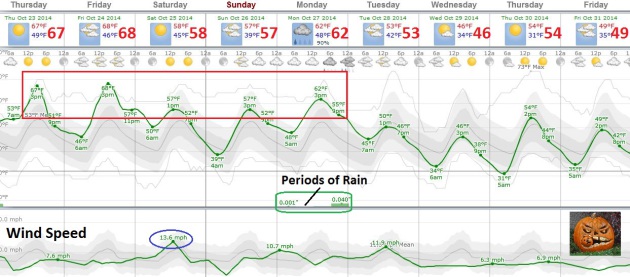
Indian Summer: Round 3? I’m rapidly losing track of how many mild spells we’ve had since the first sub-freezing low at MSP (31F on October 11), but I think this is the third wave of warmth pushing north. Highs reach the 60s to near 70F today and tomorrow; I still think there’s a good chance of low 60s over the weekend and Monday before cooling back down to October-like levels later next week. ECMWF guidance is hinting at mid 40s to around 50F for Halloween Trick or Treating – probably dry. No blizzards this year.
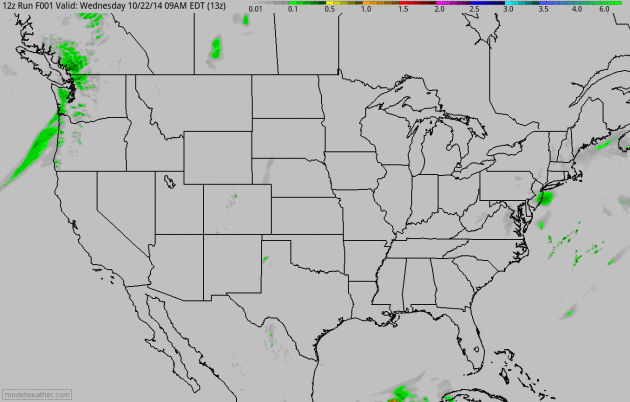
Nor’easter Soaks Nor’east, Tropical Disturbance for South Florida? A slow-moving storm churning up the East Coast will circulate copious amounts of Atlantic moisture into New England, where some 2-4″ rainfall amounts are possible, especially Boston to Portland and Bangor. Winds top 20-30 mph with a risk of flash flooding over the next 36-48 hours. Heavy rain spreads across the Pacific Northwest into northern California while south Florida gets brushed by a tropical system which may put down some excessive rainfall amounts near Miami.
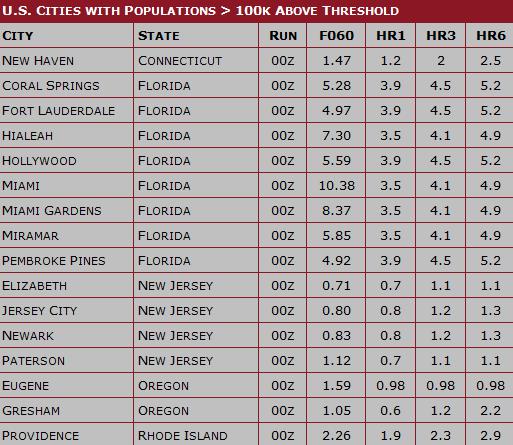
Flash Flood Potential. Our internal Alerts Broadcaster models are printing out excessive rainfall amounts for south Florida over the next 60 hours. I’m not convinced Miami will see over 10″ of rain, but some 4-8″ amounts are possible, capable of significant flash flooding later today into Friday.
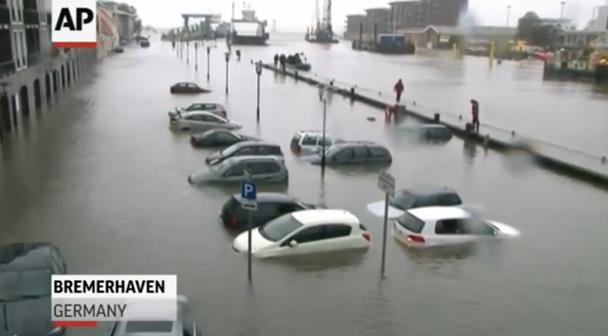
Germany Storm Surge Submerges Cars. A powerful storm surge from the soggy, wind-whipped remains of Hurricane Gonzalo caused very significant flooding along Germany’s coastline on Wednesday. Here’s a link to a video clip from AP and The Brisbane Times: “Raw vision: cars stand partially submerged in water as the remnants of Hurricane Gonzalo caused a storm surge along parts of Germany’s coastline.”
* Losses from Hurricane Gonzalo on Bermuda estimated at $200-400 million dollars.
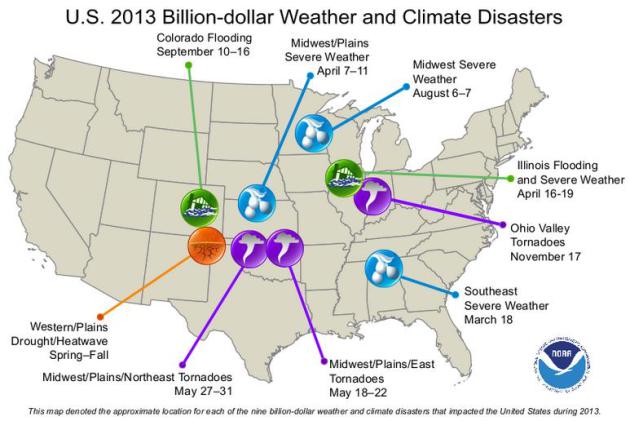
Billion Dollar Weather/Climate Disasters: Overview. Here’s an excerpt from NOAA NCDC: “Found here are the weather/climate events that have had the greatest economic impact from 1980 to 2013. The U.S. has sustained 170 weather/climate disasters since 1980 where overall damages/costs reached or exceeded $1 billion (including CPI adjustment to 2013). The total cost of these 170 events exceeds $1 trillion. In 2013, there were 9 weather/climate disaster events with losses exceeding $1 billion each across the United States. These events included a drought event, 2 flooding events, and 6 severe storm events. Overall, these events resulted in the deaths of 113 people and had significant economic effects on the areas impacted…”
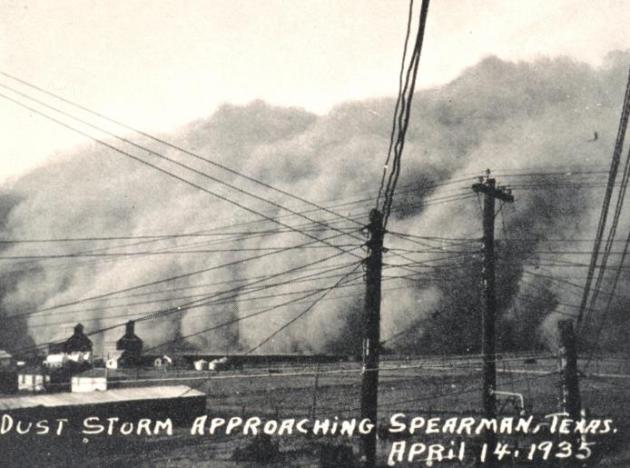
1934 Drought In Dust Bowl Days Was Worst in Thousand Years for U.S.: NASA. Here’s a clip from a story at NBC News that made me do a double-take: “The drought of 1934 wasn’t just bad, it was the worst. That’s the finding of a reconstruction of North American drought history over the past 1,000 years, done by scientists from NASA and Columbia University’s Lamont-Doherty Earth Observatory. Their study, to be published in the Oct. 17 issue of Geophysical Research Letters, concludes the drought of 1934 during the Dust Bowl years in the North American Plains was 30 percent more severe than the next worst, which occurred in 1580, NASA said. The scientists used tree ring records from 1000 to 2005 along with modern observations…” (Image: Wikipedia).

Rising Above The Risk: America’s First Tsunami Refuge. Yes, it puts our cold fronts into stark perspective. Here’s the intro to a press release from The Geological Society of America: “Washington’s coast is so close to the seismically active Cascadia Subduction Zone that if a megathrust earthquake were to occur, a tsunami would hit the Washington shoreline in just 25 minutes. One coastal community is preparing for such a disaster by starting construction on the nation’s first tsunami evacuation refuge, large enough to shelter more than 1,000 people who are within 20-minute walking distance. The vertical evacuation-refuge will be the roof of the gym of the new school in Grays Harbor County, Washington. The Ocosta Elementary School and Tsunami Safe Haven will be the first of its kind in the nation and will be the culmination of 18 years of effort, said Tim Walsh, who is a Chief Hazard Geologist at the Department of Natural Resources and has been working on this project since The National Tsunami Hazard Mitigation Program was formed in 1995…”

Floods Don’t Wash With This Amphibious, Floating House. Here’s an idea that just might work. Let your home ride the rising waves? Gizmag has details, here’s an excerpt: “Living in an area prone to flooding has historically meant that you need high sockets and deep pockets. Baca Architects, however, has come up with an altogether more ingenious solution. Its “amphibious house,” designed to float on floodwater before being gently placed back down, is nearly complete...”
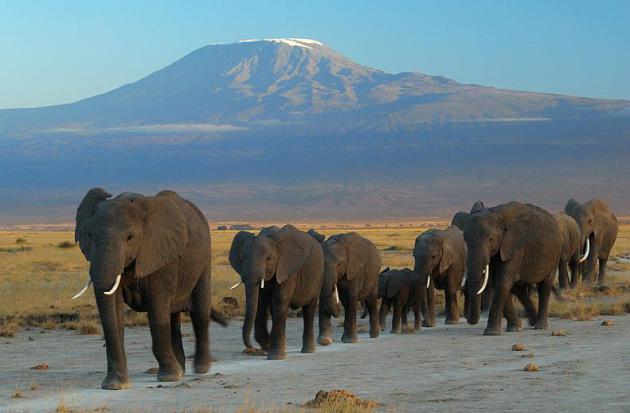
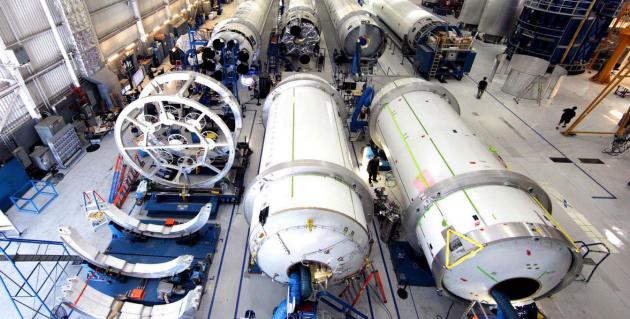
Photo credit: “Better, faster, cheaper.” (SpaceX)

Top 10 Greenest Countries In The World No, the USA isn’t in the Top 10, not yet. Here’s an excerpt of the story at EcoWatch: “The 60 countries covered are a dramatic increase from the 27 included in the last report in 2012. It assessed nations on every continent and found that the Scandinavian countries, along with Germany, were clear leaders. Sweden and Norway headed up the list of actual performance, with Costa Rica ranking third, inside the top 15 for the first time, and Germany and Denmark rounding out the top five. Poland, Senegal, Qatar, Vietnam and Mongolia bring up the rear in slots 56-60, with China just above them at 55. The U.S. came in close to the middle, ranked at 28…”

Most Energy Efficient States in the USA? Minnesota came in at #10, details from ACEEE, the American Council for an Energy-Efficient Economy. Here’s an excerpt of their report, hightlighted at InvestorIdeas.com: “Governors and lawmakers in state capitals across the nation continue to take major steps to lower energy costs, reduce pollution, and save consumers money by increasing their states’ energy efficiency, according to the findings of the 8th edition of the State Energy Efficiency Scorecard released today by the American Council for an Energy-Efficient Economy (ACEEE). Available online at http://aceee.org/state-policy/scorecard, the report found that in 2014 Massachusetts (#1) continues to edge out California (#2) as the most energy-efficient state in the nation for the fourth year in a row. Following these states in the top 10 are: Rhode Island (marking the state’s first time in top five), Oregon, and Vermont (all tied for #3); Connecticut (#6); New York (#7); Washington (#8); Maryland (#9); and Minnesota (#10)…”
* Minneapolis: 8th Most Energy Efficient City. ACEEE has the Twin Cities behind Boston (#1), New York City, Washington D.C., Austin and Seattle. The city summary is here.

There’s More To Life Than Being Happy. Could the pursuit of happiness be making us more unhappy? Is happiness an accidental byproduct of the pursuit of something….more? Here’s a clip from an article at The Atlantic that got my attention: “…At this writing, Gallup also reports that nearly 60 percent all Americans today feel happy, without a lot of stress or worry. On the other hand, according to the Center for Disease Control, about 4 out of 10 Americans have not discovered a satisfying life purpose. Forty percent either do not think their lives have a clear sense of purpose or are neutral about whether their lives have purpose. Nearly a quarter of Americans feel neutral or do not have a strong sense of what makes their lives meaningful. Research has shown that having purpose and meaning in life increases overall well-being and life satisfaction, improves mental and physical health, enhances resiliency, enhances self-esteem, and decreases the chances of depression…”

“So Badass You Can’t Believe It. Magic Leap Raises $542 Million To Launch the Future of Computing. Is there a pony in there, or maybe a baby (virtual) elephant? For a look at what (may) come next check out a story at Fast Company; here’s an excerpt: “…No one is willing today to explain exactly what the heck Magic Leap is making that’ll replace all our rectangles, but it sounds like a blending of what we currently call augmented reality and virtual reality. In fact, Dr Paul Jacobs, Qualcomm’s executive chairman and one of Magic Leap’s new board advisors, along with Google executive Sundar Pichai, used precisely those two terms in an email to me explaining why he invested…”

Our Unique “Microbial Aura” Travels With Us Wherever We Go. Proving we are the sum of our travels, interactions (and germs we’ve picked up along the way). Here’s an story excerpt that will leave you washing your hands repeatedly, courtesy of PRI, Public Radio International: “Your bacterial community [is] a composite of all of the decisions and interactions you’ve ever made in your life. Unless you lived exactly the same life as me, you would not have the same microbiome. You are, in essence, microbially unique,” explains Jack Gilbert, one of the authors of the new paper and director of the Home Microbiome Study at the Argonne National Laboratory. If you were to move in to a new home, for example, the collection of bacteria that live on and around the surfaces of the home would become so transformed by your personal microbiome that it could be indentified as belonging to you based on just a sample of its bacteria…”
Image credit above: Argonne National Laboratory. “An artist’s depiction of bacteria covering a person’s skin and surroundings (in yellow and green).”
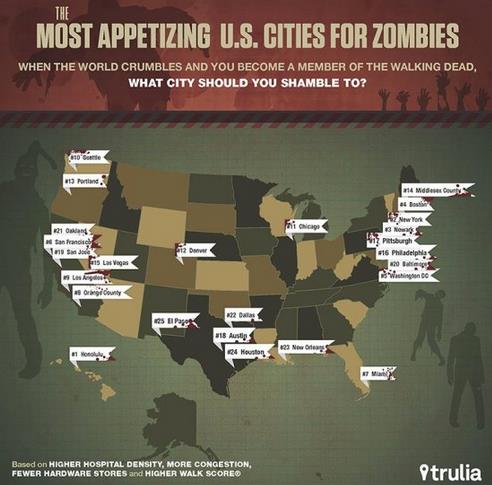
The Worst Places to Seek Refuge During The Zombie Apocalypse. Here’s some useful information – happy to see that MSP isn’t on this list. Here’s a clip from Huffington Post: “When the undead rise up, hitting the beach in zombie-free bliss will not be an option. Honolulu is ranked as the most appetizing city for hungry zombies. Residents of Honolulu will make easy targets for the walking dead, what with the city’s high walkability and lack of hardware stores (where there are potential zombie-killing weapons). Honolulu also has a high hospital density, making it easy for zombies to find weak victims, and it is extremely congested, with some of the worst traffic in the nation...”

TODAY: Wet start. Skies brighten with mild PM sun. Partial solar eclipse peaks at 5: 35 pm. Winds: West 5-10. High: 66
THURSDAY NIGHT: Partly cloudy, patchy ground fog. Low: 46
FRIDAY: Indian Summer returns. Perfect weather – warm sun. High: near 70
SATURDAY: Plenty of sun, cooler breeze. Wake-up: 49. High: 61
SUNDAY: Partly sunny, breezy. Clouds increase PM hours. Showers Sunday night. Low: 45. High: 62
MONDAY: Mild, showery rains likely. Wake-up: 51. High: 63
TUESDAY: Partly sunny, light jackets return. Wake-up: 41. High: 55
WEDNESDAY: Blue sky, still quiet. Wake-up: 36. High: 51
Climate Stories…
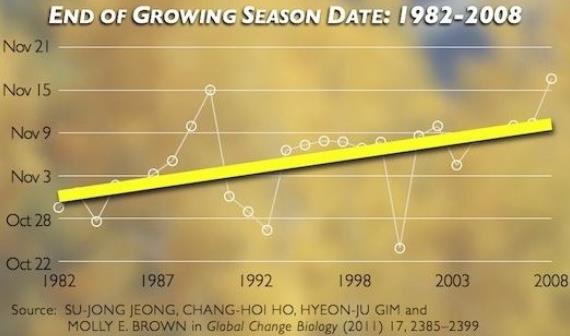
As Planet Warms, Scientists Predict Changes for Autumn Leaf Season. Here’s an excerpt from a story at Think Progress: “…“Global climate change will not eliminate fall leaf color, but the best displays will move northward and upward in elevation in response to warming. For forests in their present location, fall foliage displays will occur later in the season and may last longer, but will be of diminished quality due to less intense red colors,” Neufeld writes. “The fall foliage displays that our grandchildren will see at the end of this century will not be the ones we see today.” (Graphic above: Climate Central).

Methane Leaks Wipe Out Any Climate Benefit of Fracking, Satellite Observations Confirm. Natural gas is cleaner, assuming there are few methane leaks around the drill heads, which may turn out to be a big assumption. Joe Romm has the article at Think Progress; here’s the intro: “Satellite observations of huge oil and gas basins in East Texas and North Dakota confirm staggering 9 and 10 percent leakage rates of heat-trapping methane. “In conclusion,” researchers write, “at the current methane loss rates, a net climate benefit on all time frames owing to tapping unconventional resources in the analyzed tight formations is unlikely.” In short, fracking speeds up human-caused climate change, thanks to methane leaks alone. Remember, natural gas is mostly methane, (CH4), a super-potent greenhouse gas, which traps 86 times as much heat as CO2 over a 20-year period…”


Climate Records Are Breaking So Often Now, We’ve Stopped Paying Attention. Chris Mooney has the story at The Washington Post; here’s an excerpt: “…On Monday, we learned from the National Oceanic and Atmospheric Administration that last September was the hottest of them all, out of 135 Septembers going back to 1880.The same was true for August 2014. And June of 2014. And May of 2014. What that means is that for each of these months, the combined average global land and ocean surface temperature has never been higher, at least since we started recording these temperatures back in the presidency of Rutherford B. Hayes…”
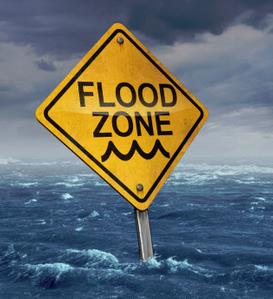
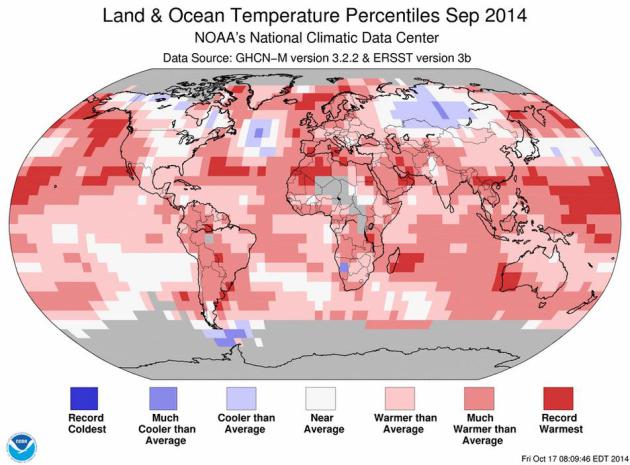
Another Month, Another Global Heat Record Broken. Will 2014 break another record? It’s still a little early, but if the warm weather departures we’ve been tracking in recent months continue the answer is probably yes. Here’s an excerpt from AP and Huffington Post: “…If 2014 breaks the record for hottest year, that also should sound familiar: 1995, 1997, 1998, 2005 and 2010 all broke NOAA records for the hottest years since records started being kept in 1880. “This is one of many indicators that climate change has not stopped and that it continues to be one of the most important issues facing humanity,” said University of Illinois climate scientist Donald Wuebbles…”

